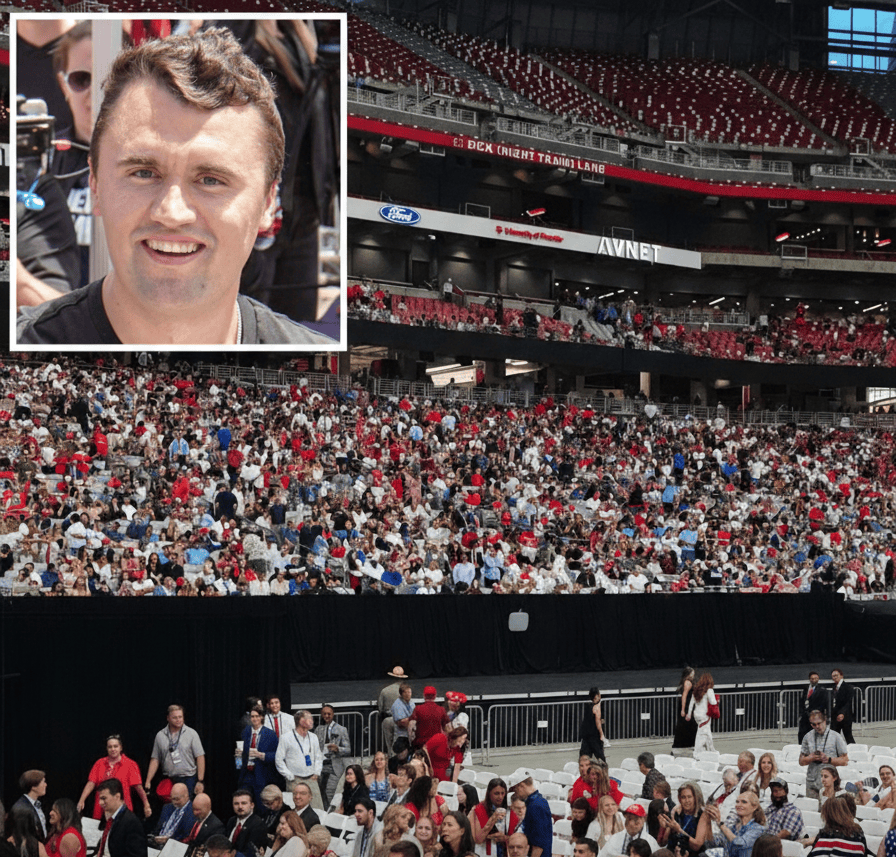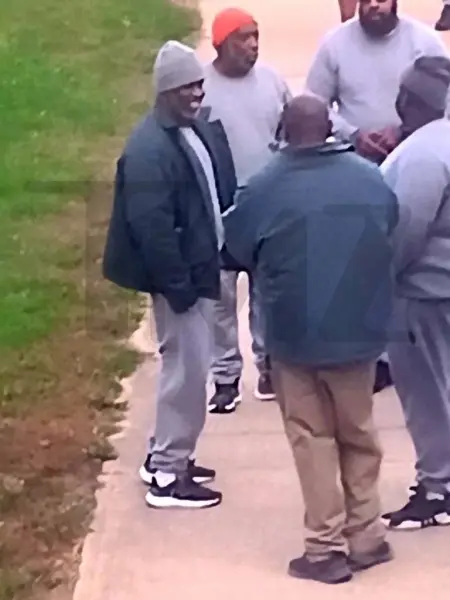Inside the Stadium as Thousands Fill Seats for Charlie Kirk’s Funeral Service with Powerful Displays of Faith and Tribute
The funeral service for Charlie Kirk drew thousands into State Farm Stadium, transforming the same space usually filled with football fans into a place of prayer, remembrance, and reflection. The sheer size of the crowd was striking. People had lined up early, some waiting for hours to secure a seat inside, and by the time the service began, the stadium looked less like a sports arena and more like a cathedral of collective grief and faith.
Kirk, the 31-year-old founder of Turning Point USA, was remembered not only as a political voice but also as someone whose Christian faith had been a part of his life since childhood. That tone was unmistakable throughout the service. Hymns were sung, prayers echoed through the stands, and scripture was read with the same kind of reverence you might expect inside a church rather than a massive stadium. Our photographer, who has covered dozens of GOP events and rallies, noted that the atmosphere felt “very Christian,” and that sense of spirituality framed the entire day.
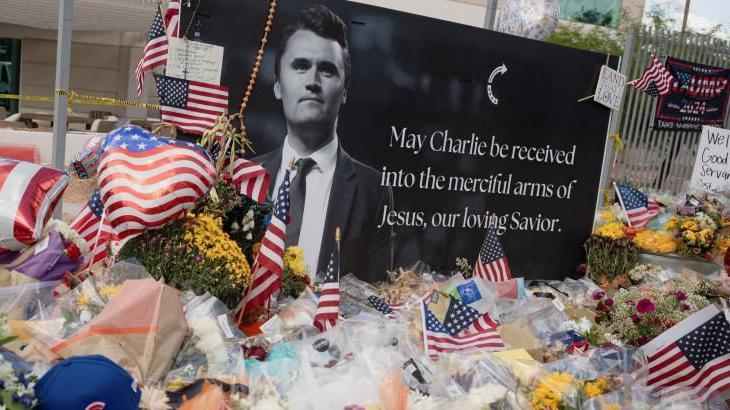
Large screens inside the stadium displayed tributes, from video montages of Kirk’s speeches to personal messages from those closest to him. Friends and family spoke of his determination, his energy, and his ability to connect with people across the country. There were tears in the crowd, but also bursts of applause as stories were shared that captured his larger-than-life personality. At one point, the entire stadium rose to its feet in unison, not for a sporting victory but for a standing ovation honoring a life that ended far too soon.
For many in attendance, the service was more than a farewell. It was an affirmation of the values Kirk stood for and a reminder of the community he helped build. Supporters spoke quietly among themselves about how they first encountered his work—through campus events, social media, or speeches—and how it had inspired them. Families brought children, wanting them to witness the scale of the gathering and understand the legacy of someone who, in their eyes, represented conviction and purpose.
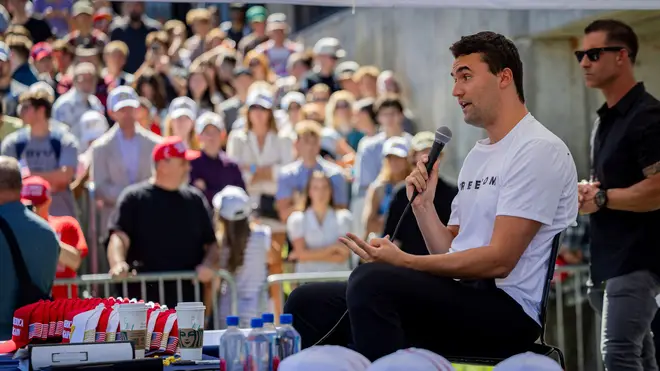
The logistics of the day underscored just how many wanted to take part. Security was heavy, with long lines stretching outside before doors opened. Volunteers ushered guests through the concourses, and entire sections were filled with church groups, student organizations, and community leaders who had traveled from other states. The size of the turnout spoke volumes about Kirk’s reach, not just politically, but personally, as someone who touched lives and inspired involvement.
Faith remained the thread binding the day together. From the stage, pastors spoke of redemption and legacy, reminding the audience that life is fleeting but impact can endure. Moments of silence allowed the weight of loss to settle in, while prayers lifted the mood again with words of hope. Music was woven throughout the program, from classic hymns to contemporary worship songs, creating an emotional rhythm that carried people through the service.
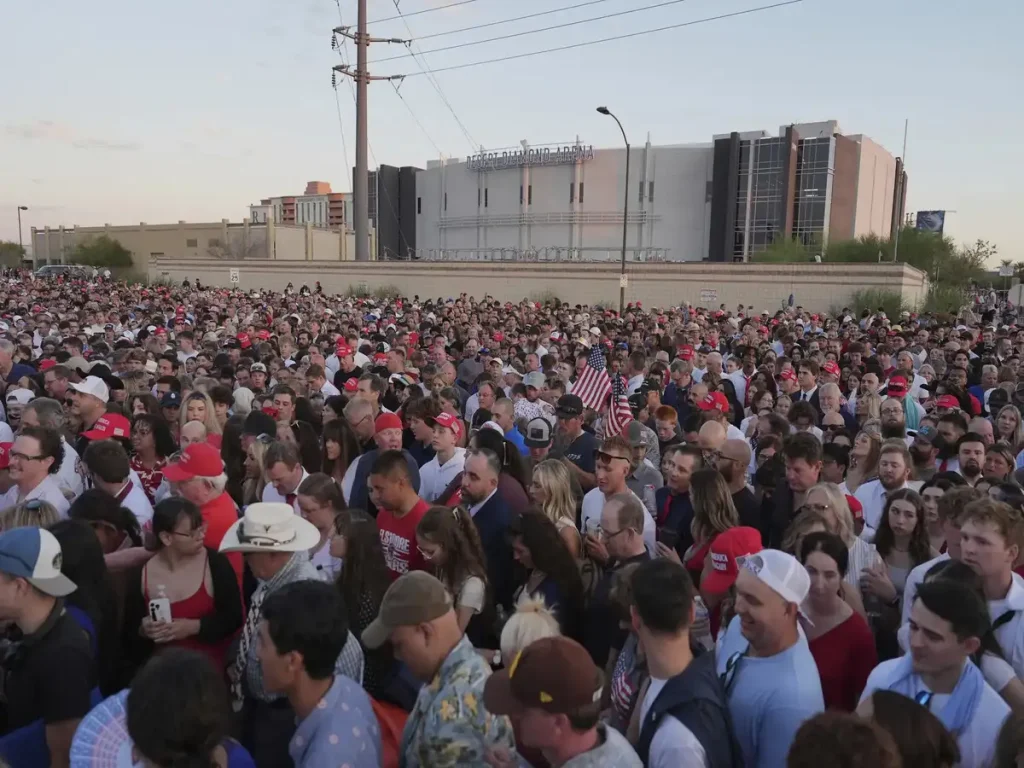
As the event drew to a close, there was a sense of both heaviness and resolve. Many lingered in their seats, taking photos of the screens displaying Kirk’s image or clasping hands with those next to them in quiet solidarity. Outside, as the crowds slowly filtered away, there was little of the usual noise that comes after a stadium event. Instead, conversations were hushed, thoughtful, and reflective.
What became clear is that this funeral was not only about saying goodbye. It was about reaffirming a community of faith, about acknowledging the influence of one man, and about the shared belief that his work and message would carry forward. For those thousands packed into the stadium, it was a moment that blended mourning with meaning, grief with gratitude, and loss with legacy.
